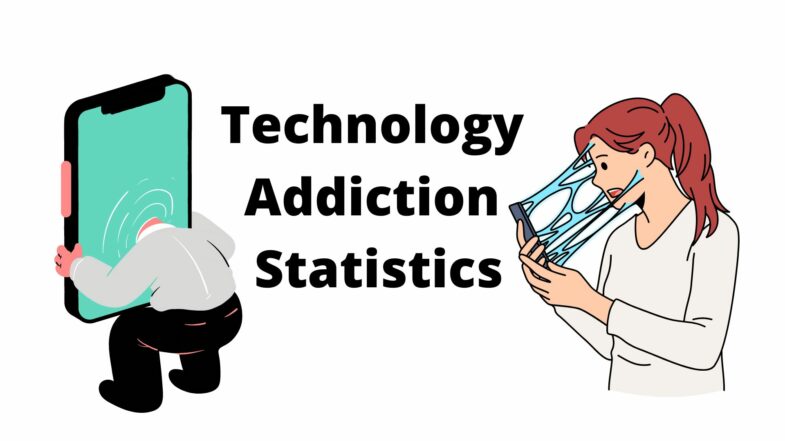In fact, in the fast-transforming, current digital world, the area of education—specifically language teaching and learning—is witnessing an integration of technology that is revolutionary. This comprehensive paper goes into all the great benefits the technology imparts in the sphere of language learning, which, at the same time, considerably enhances both the methodologies of teaching and the experiences of learners. The question that comes into play is, “What are the benefits of using technology for language learning and teaching?” This becomes relevant more than ever as educators and students globally are trying to make their way within the various intricacies of digital learning platforms.
Table Of Contents
- Personalized Learning: Transformation of Language Education
- Overcoming Boundaries: Access and Flexibility
- Engagement and Motivation via Multimedia Tools
- Enhance Communication Skills in a Technology-Mediated Setup
- Continuous Assessment and Real-Time Feedback
- Broader Horizons: Global and Cultural Exposure
- The same will build technological proficiency alongside language skills.
- Technological Proficiency Alongside Language Skills
- FAQs
- How does technology make language learning more individual?
- Is it possible for technology in language learning to get to the most remote areas?
- How effective is multimedia about language learning?
- How does technology help improve language communication?
- What is the potential advantage of real-time feedback in language learning?
- Conclusion
Personalized Learning: Transformation of Language Education

Personalization is the core capability integrated into adding technology into language learning. A personalized experience is one in which an individual can go at their own pace, style, and preference, making learning a journey toward discovery and improvement. Digital platforms apply algorithms to check the current baseline of learners and adapt instructional material to every lesson to be optimally challenging. For example, language apps like Duolingo or Babbel use artificial intelligence to structure their courses around how a user is doing, strengthening topics where a user needs more attention and moving on to the next level when the learner shows proficiency. This makes learning efficient because students do not waste time going over what they already know; they will give other energy to working on areas that require improvement. ” What are the benefits of using technology in language teaching and learning?” includes personalization that can dramatically increase learning efficiency.
Overcoming Boundaries: Access and Flexibility
Technology in language learning provides effortless access—eliminating all kinds of geographical and physical boundaries and providing the facility of learning languages to anybody with an internet connection. This, it may be said, is incredibly revolutionary for those accessing it from remote locations or the ones with a particular need who might have found it challenging to deal with everyday classroom learning. Online platforms provide maximum flexibility for learners to study at their own pace and according to their schedule. Students can learn languages at their convenience: from an offline platform offering downloadable content to a live lesson from a tutor who could be on the other side of the world. “What are the advantages of using technology in language teaching and learning?” covers the aspect of shattering traditional bounds of accessibility and flexibility.
Engagement and Motivation via Multimedia Tools

Language learning via multimedia tools such as videos, interactive quizzes, and augmented reality scenarios brings much-needed engagement. Multimedia tools can involve visuals and hearing senses, which is beneficial for multiple learning styles; they also increase memory retention. Interactive videos would, for example, require that a student be active in answering questions or repeating phrases, enabling them not to be passive receptors of information but active in their learning. Gamification of learning tasks can turn monotonous repetition into thrilling challenges, leading to much better motivation and fun from the learning process. The research question “Why is it beneficial to use technology to teach and learn languages?” necessarily includes ways such tools help increase learner engagement and motivation.
Enhance Communication Skills in a Technology-Mediated Setup
Technological tools offer platforms for students to interact with the new language in an authentic environment. Through online forums, video conferencing tools, and real-time messaging, students can pragmatically find means for natural contact opportunities with native speakers and speakers who are also language learners from almost all parts of the world. Such interactions are a significant factor in language learning, as they help boost confidence and fluency by placing learners in communicative contexts resembling real-life situations. The technologies, for instance, speech recognition software, have been known to come in handy in the development of improved pronunciation and listening skills through the provision of instant feedback—a feature that the traditional learning set-up is not very effective at. Consequently, the answer to the question “What are the advantages of technology in language teaching and learning?” will be the development of vital communication skills using technology.
Continuous Assessment and Real-Time Feedback
Another significant advantage of using technology in language education is the possibility of real-time assessment with instant feedback. AI-enabled platforms are furnished to provide immediate corrections with explanations of language exercises, making it possible for learners to understand the mistakes and learn from them immediately. This immediate feedback loop speeds up the learning process since students can reorient with more immediacy and effectiveness. So, in response to the question “What are the benefits of using technology in language teaching and learning?” continuous, real-time assessment is one benefit.
Broader Horizons: Global and Cultural Exposure
A great advantage of employing technology in the teaching and learning of languages is that it brings with it numerous cultures’ exposure to students and offers global perspectives. Language is not just a tool for communication; it is a medium that guides through different dimensions of many cultures and worldviews. The technology will enable learners not only to access materials from different parts of the world but also to gain an understanding through speakers representing different cultural backgrounds of cultural nuances and etiquette associated with the language.
The same will build technological proficiency alongside language skills.
Technological Proficiency Alongside Language Skills

By incorporating technology in language learning, learners will not only upgrade their linguistic skills but also become digital literates and increase their technological prowess. As the world digitizes at an accelerating pace, robust digital skills quickly become an equivalent need akin to language skills. Educational technologies place learners in a situation where they need to use software and applications for both teaching and learning and in so doing, they are incidentally equipped uh digital skills that form part of the competencies now necessary in the contemporary workplace.
FAQs
How does technology make language learning more individual?
Technology evaluates individual performances and designs lessons to correspond with the achievement of the learner, thus increasing the rate of learning as well as deepening it.
Is it possible for technology in language learning to get to the most remote areas?
Online resources, together with downloadable content, come to bypass other traditional learners who were limited by geographic barriers.
How effective is multimedia about language learning?
Multimedia helps in learning better by using more senses to visualize and is retained. Learning becomes more enjoyable and helps the learner to maintain a maximum quantity of information.
How does technology help improve language communication?
Real-time interaction with native speakers or other learners for effective conversational practice helps one develop their listening skills.
What is the potential advantage of real-time feedback in language learning?
Immediate error corrections and explanations enable learners to understand and correct their mistakes on the spot, which primarily makes the learning process fast and effective.
Technology integration into language education offers transforming benefits: it is interactive, easy to implement, and ensures that learners are prepared to be digital citizens in a globalized world characterized by digital literacy. As these tools become classics, the potential for innovation in language teaching and learning is unlimited, boding for even further advances that will come down the road in how we teach and learn languages.
Conclusion
The benefits of using technology in language teaching and learning are many and multi-faceted. Technology has not just augmented but revolutionized the traditional methods of language education through the provision of personalized learning experiences, the demolition of accessibility barriers, the promotion of engagement through multimedia tools, the facilitation of real-time communication practices, and continuous assessment. As a digital solution continues to be embraced, its potential in innovative educational practices seems boundless, and the future sounds promising to make language learning more accessible, efficient, and more in tune with the digital age.





